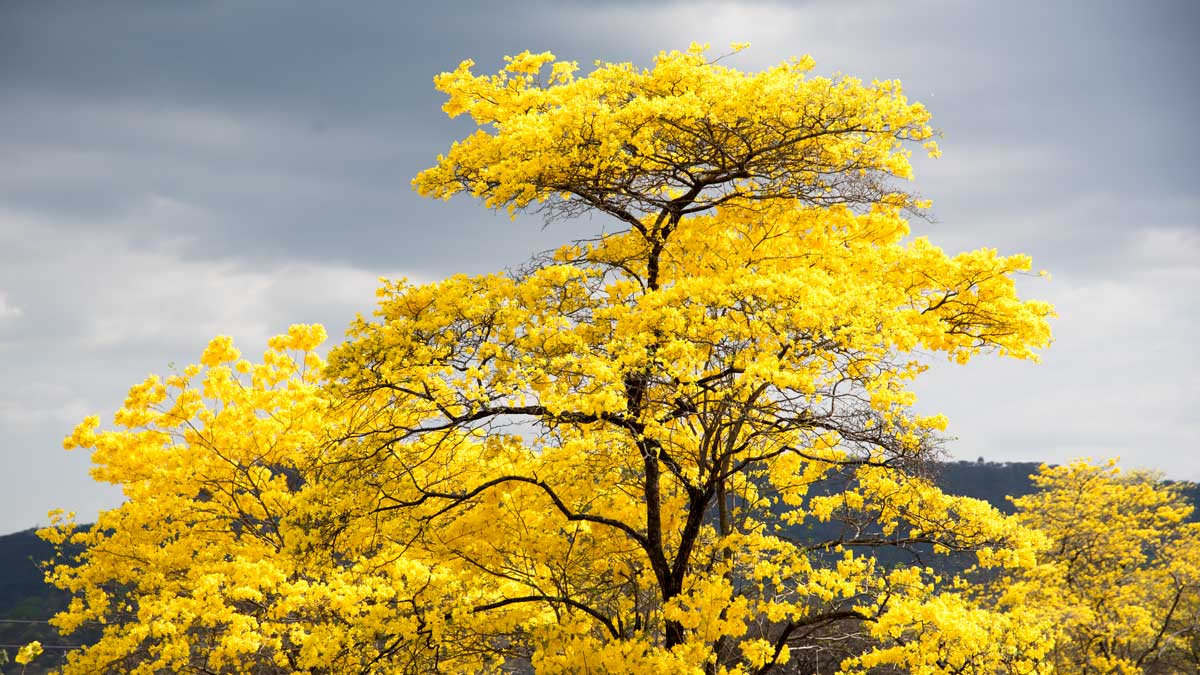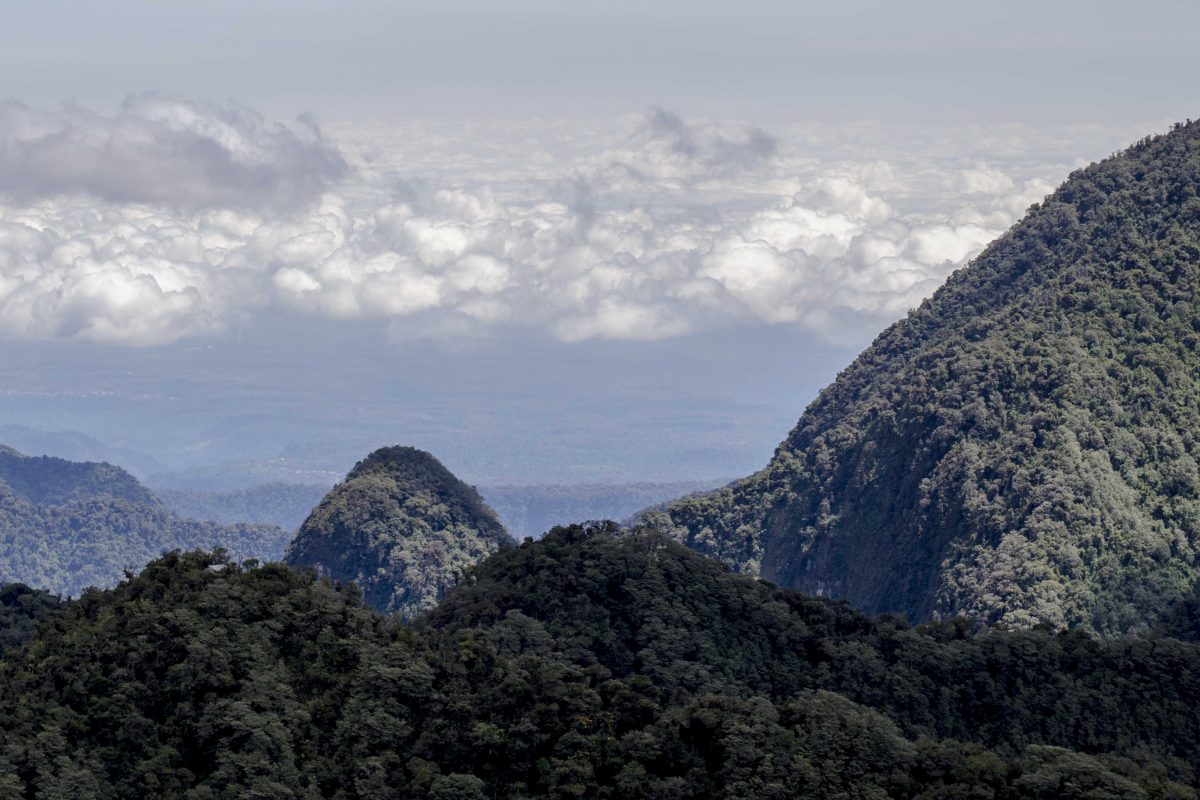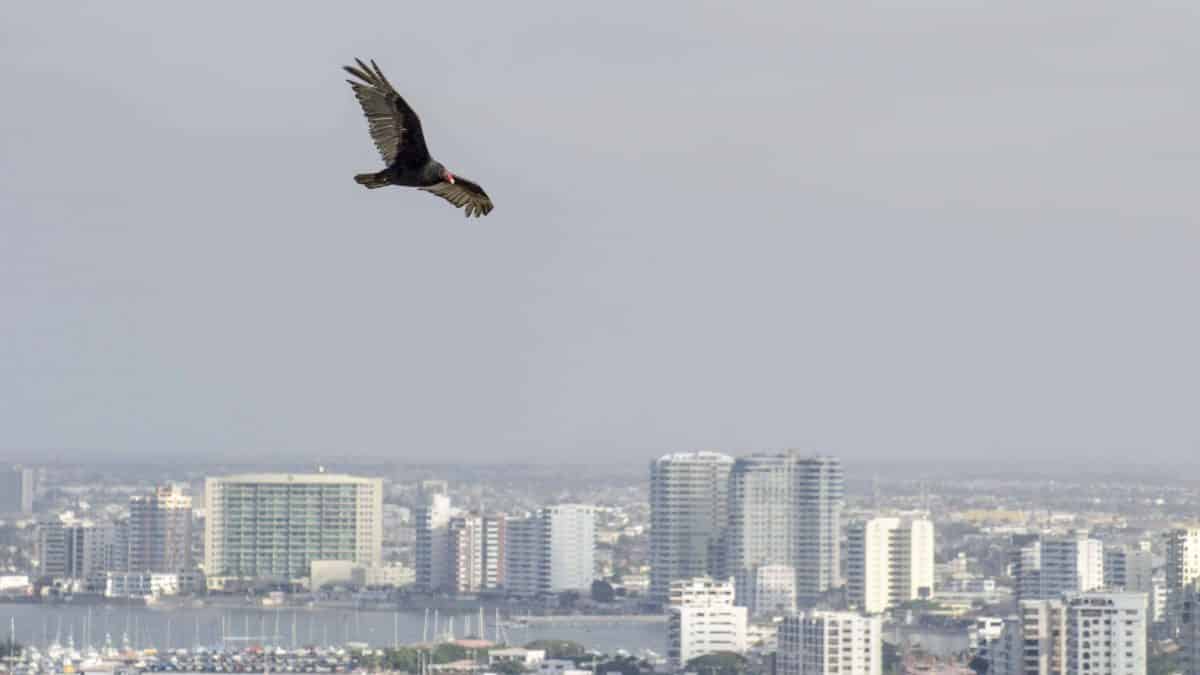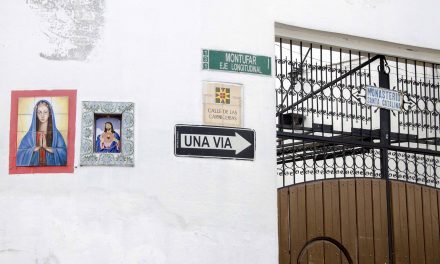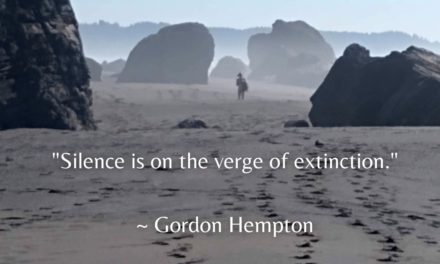As responsible travelers evolve, so do the stories we share.
This article is part of our living archive — trusted content we continue to care for.
First published on December 6, 2018 • Last updated on December 6, 2018.
Mama Negra: A Photo Essay
Each year in November, the city of Latacunga, Ecuador celebrates Mama Negra, a figure of national fame. The festival and parade originated in 1742 when local residents turned to the Virgin of Merced to save them from a possible eruption of the nearby Cotopaxi Volcano. Of course, the original date of the festival coincides with the September Equinox. Spanish colonists likely planned the event to blend with the indigenous festival of Killa Raymi.
Today, the parade can last hours with participants dancing and drinking the entire route. Along the way, important figures pass by, each with their own meaning and importance. Mama Negra arrives only after hundreds of others have danced past, many throwing sweets into the crowd, others offering shots of strong aguardiente, all dressed in brightly colored local costumes.
The following pictures present the main cast of characters ending with the most important, Mama Negra herself.

The Main Characters of Mama Negra
There are several main characters of Mama Negra and all warrant at least a small description. As each of the main characters marched by, the watching crowd became more energized. It meant that Mama Negra was also approaching.
El Angel de la Estrella
El Angel de la Estrella, the Angel of the Star, is loose representation of the Archangel Gabriel. In the Mama Negra parade, he is always a young man dressed in bright white adorned with gold or silver trappings, wearing a set of spectacular, feathered wings, and mounted on a white horse. On his head, a large crown with a star shines brightly. In his hand, he holds a scepter also adorned with a star. His job is to praise the Virgin Mary.
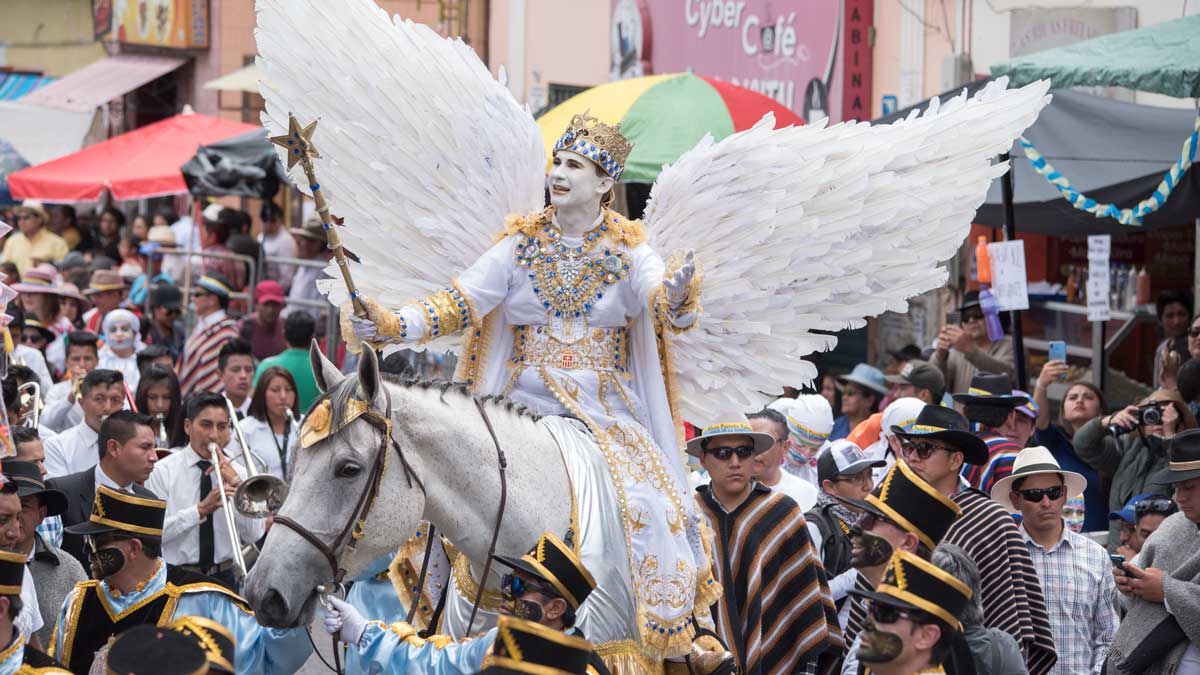

TEl Rey Moro
There are two competing beliefs about the origins of El Rey Moro, the Moorish King. The first states that he comes from indigenous origins and is supposed to represent Incan Royalty. The second belief is that El Rey Moro is one of the three kings that visited the Baby Jesus. Either way, this character definitely looked like a Middle Eastern prince, wearing midnight blue and shining silver clothing from the Crusades, an intricately decorated headpiece that blends Incan royal headwear with a Moorish turban, and a silver scepter. His dark beard and royal bearing made him a favorite with the crowd. He rides a dark horse, making him the polar opposite of El Angel de la Estrella.
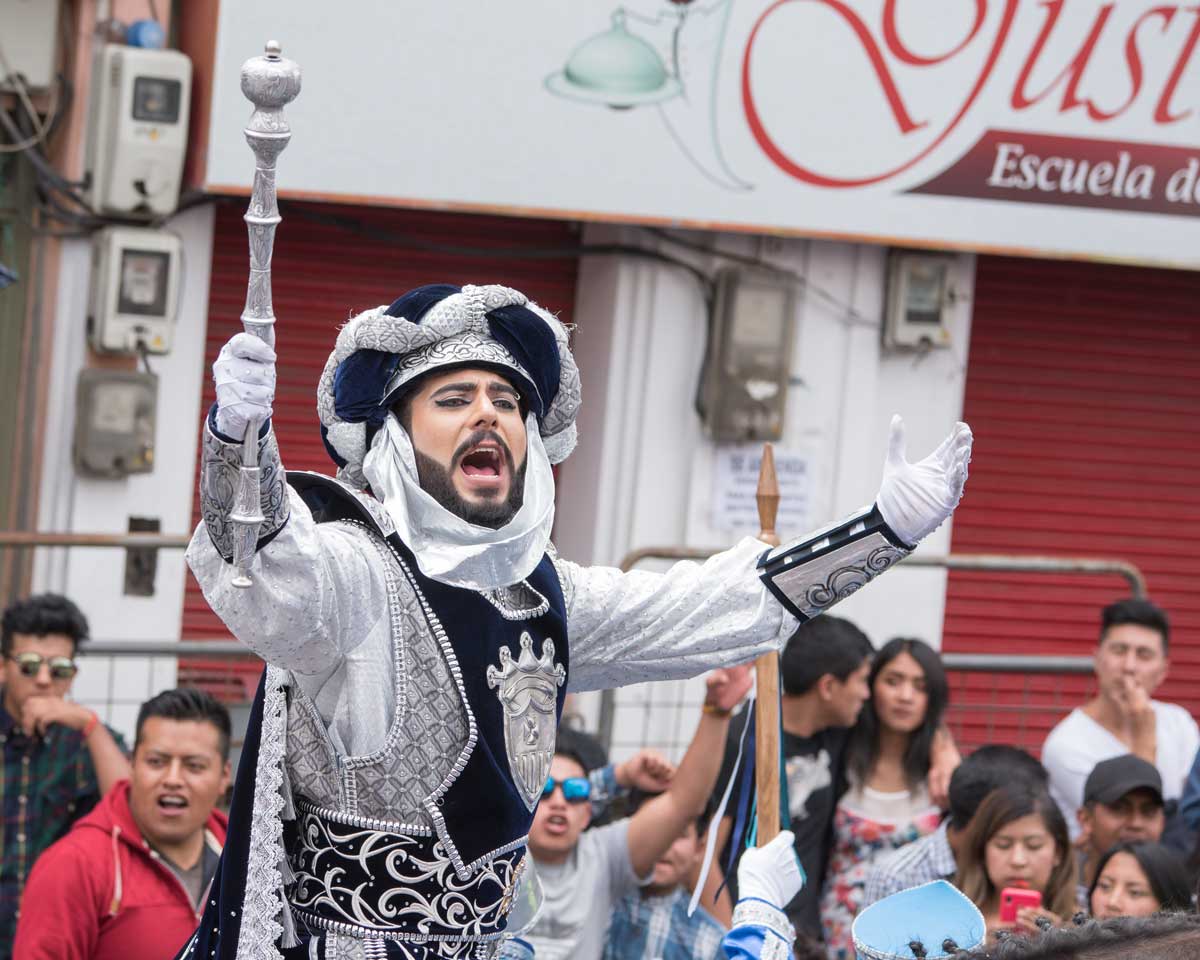
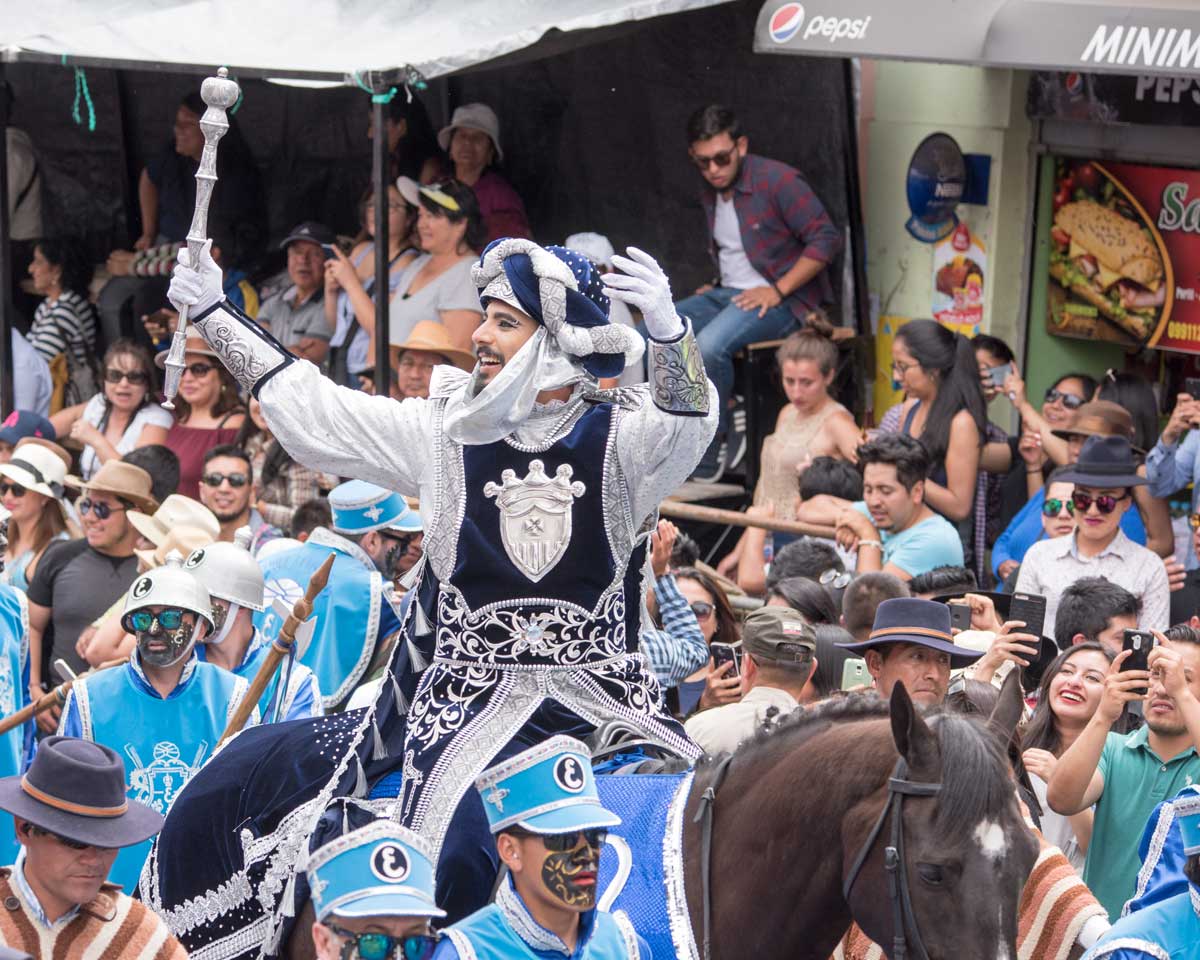
El Capitán
El Capitán, or the Captain, is the host of the entire parade, also called the Prioste Mayor. He is chosen from among the organizers of that year and is usually a prominent business man of the community. He is a symbol of Spanish governance. In some traditions, he is considered the lover of Mama Negra.
Dressed in traditional military garb of the Spanish colonial era, El Capitán is accompanied by an entourage of soldiers. Along with flourishing his sword to the crowd, El Capitan also reviews his military escort as parade watchers look on.
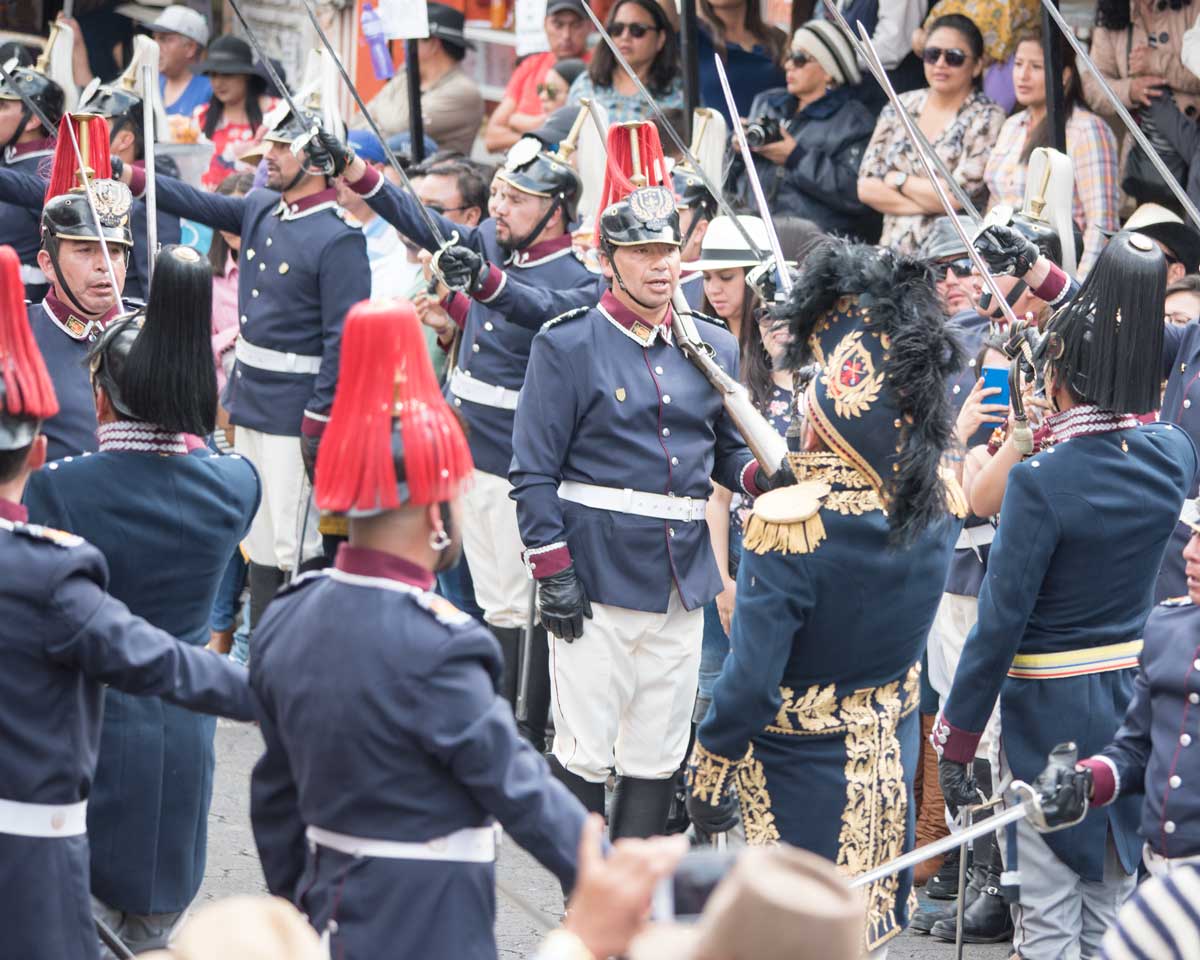

Mama Negra
And last, but definitely not least, is Mama Negra.
Ironically, Mama Negra is always a man. This person is chosen up to a year beforehand. It is considered a great honor to be chosen to perform this role.
Riding a horse, dressed in layers of lace and golden silk heavily embroidered with jewels and metallic threads, Mama Negra provides the heart and soul of this parade. As the central figure, she is a blend of different cultural traditions. To many, she is strictly a version of the Virgin Mary. To others, she is a slave set free by the Virgin Mary and a representation of the thousands of slaves who worked the mines in Latacunga. To others, she is the Pachamama, or the Earth Mother, the goddess of pre-Columbian peoples of Ecuador.


Traditionally, Mama Negra holds high in her right hand a small doll that dances to the rhythm of the parade. This is her daughter, Baltasara. In Mama Negra’s left hand, she carries a small chisguete that is filled with a white liquid meant to be mother’s milk. Looking a little like an aspirator used to clear a baby’s nose, the chisguete squirts liquid into the mouths of spectators. The day we were at the parade, no spectator could get close enough to taste the ambrosia.
Mama Negra is accompanied by several other companions wearing black face. Two are young boys, representing her two sons. Many of the others are Negro Loeros, described in the previous article about Mama Negra. They sing or chant several different songs such as this one:
Atención, atención
Ya llego la mama negra
A demostrarte en este día
Toda su devoción y alegría
Por siempre Madre MaríaAttention, Attention
Mama Negra has arrived
To show to you on this day
All of her devotion and joy
Forever Mother Mary

SOURCES FOR THIS ARTICLE
Many thanks to our friends, Miguel Rueda and Gloria Duque, for sharing this cultural experience with us!
We used many Ecuadorian sources, as well as conversations with locals at the parade, to write this article:
- http://www.mamanegra.com.ec/
- https://es.wikipedia.org/wiki/Mama_Negra
Like These Photos?
Check out our other photo essays:
Cuyabeno Wildlife Reserve
An Amazon Reserve in Northeast Ecuador
Mama Negra
Supporting Characters of Mama Negra
Mama Negra
Main Characters of Mama Negra
Flowering Guayacanes
First Rains Bring Beautiful Flowers in Zapotillo



